Jali 2017
Jali – net or grid in Sanscrit – is the term for a perforated stone or latticed screen, usually with an ornamental pattern used in Indian architecture to structure spaces. A screen can be source of protection, a cover, or a veneer that can physically or visually separate things and keep them at a distance. A paravent, in English usually called a folding screen, is usually meant to screen people from view as they change clothes. However, a screen also can display something, broadcast it, or function as a projection surface. So while on the one hand a screen can protect its user from the light, a display screen sends light into the eyes of the viewers. Nevin Aladağ’s series Jali engages precisely with this duality: to enable as well as to hinder the gaze. In their book on film theory, Thomas Elsaesser and Malte Hagener write about it: “Screens hide and protect, but they also open up and reflect. Screens are (semi-permeable) membranes through which something can pass, but they can also keep things off – they can sieve and filter. … So screens are something between us and the world, protecting us, but also opening access.“
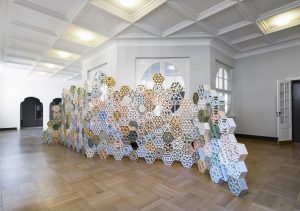
Installation view, Hessisches Landesmuseum Kassel, documenta 14
approx 210 glazed ceramics, 9 different pattern, various colors
H 220 × W 650 × D 14 cm, weight approx one tonne
(each hexagon H 24 × W 28 × D 10-15 cm)
photo credits: Trevor Good
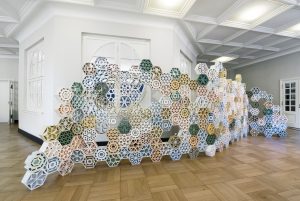
photo credits: Trevor Good
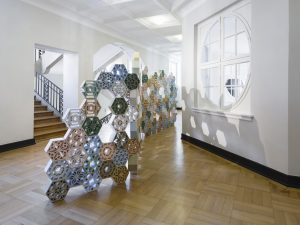
photo credits: Trevor Good
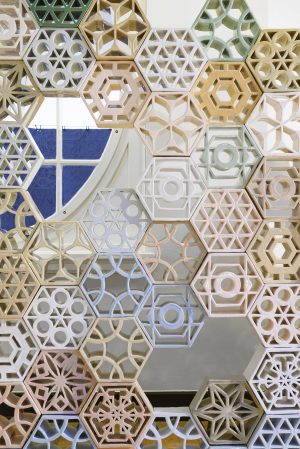
photo credits: Trevor Good
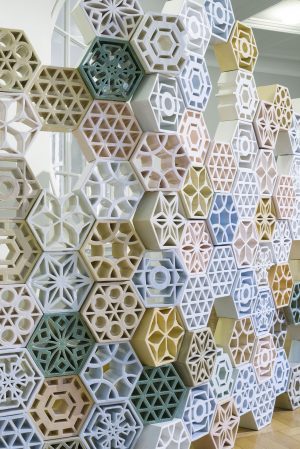
photo credits: Trevor Good
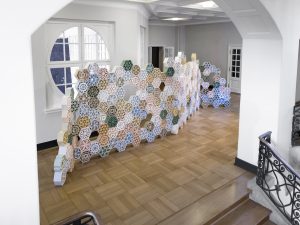
photo credits: Trevor Good
Aladağ’s work Jali for documenta 14 in Kassel consists of three interconnected architectural elements. Hexagonal buildings blocks designed by Aladağ form a fanlike shape, like that of a folding screen (paravent) or leporello. The individual building blocks of this folded wall in the public space are based on various patterns of Mashrabija, an architectural façade strategy in the Maghreb as well as in the Middle East. It allows for looking outside, simultaneously catching the gaze from outside in its ornamental pattern. This way, what is private is screened and protected from the public gaze. Aladağ collected the models for her pastel-colored ceramic blocks at various sites, and then developed heterogeneous matrices ranging from European Art Déco to Arab medieval architecture. She combines these elements into a geographically and culturally utopian object. For documenta in Kassel, Aladağ built a fragmented, permeable and porous wall, where the visual and physical separation by a screen fails in the best sense, because in Jali Aladağ reflects symbolically on different patterns of revealing and hiding. As a concrete object in the world, Aladağ’s work enables a multi-perspective way of looking at and through something, which prefers exchange to shielding things off.
(Excerpt from a text by Nico Anklam)





